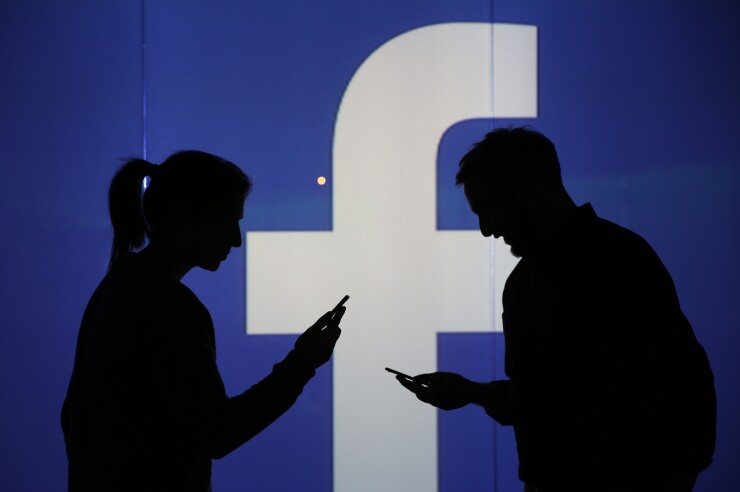The world’s largest social media platform, Facebook, appears to be on the brink of launching a new payment system.
It won’t be a walk in the park. Reportedly it’ll be a “stablecoin," or a digital coin backed by traditional currencies. But details are sketchy.
While the social media giant’s challenge is enormous, the potential benefits are huge.

WeChat and Alibaba/Ant Financial profit from WeChat Pay and Alipay, respectively. By insinuating itself in consumers’ daily payments Facebook would increase engagement and capture a treasure trove of predictive data. More targeted ads, engagement and incentives could spur commerce and produce more ads and payments. That would boost fees and increase the social network's flywheel effect.
But building payment-system critical mass and relevance is notoriously difficult. Better payments mousetraps must find a path to critical mass on both sides of the network before becoming relevant and delivering value. Established systems have critical mass, work reasonably well and, because they are habits, are difficult to displace.
The payments graveyard is full of systems that were supposed to be less expensive, more secure or in other respects superior, yet failed to achieve critical mass. That includes Revolution Money, Debitman, PayFair, the Euro Alliance of Payment Schemes, Beenz, Flooz, Simpay, Cardsoft, CurrentC, Cybercoin, First Virtual, Digicash and Mondex. E-Gold and Liberty Dollar ran afoul of U.S. regulators.
And ballyhooed cryptocurrency bitcoin still doesn’t have a compelling use case and has performance, support and volatility issues. It also lacks critical mass.
Mastercard and Visa are trusted, a habit for consumers, accepted by 60 million merchants worldwide, and have 2 billion and 3.3 billion cards respectively.
Still, with 2.3 billion monthly active users, Facebook has the reach and resources to give it a go. By using a stablecoin, the social-media platform could reward consumers for watching ads and buying, and encourage merchants to accept the digital currency by discounting processing and advertising fees.
Payments momentum on-platform would spur use in adjacent e-commerce and potentially at the physical point of sale.
To back its digital coins the social media titan reportedly seeks to raise a billion dollars from firms such as Mastercard and Visa and the world’s largest payment processor, First Data.
That's curious, because a Facebook-managed stablecoin would threaten the payment networks. While in principle cardholders could make Mastercard payments off a stablecoin account, a Facebook payment system, managed centrally or over a distributed digital ledger, would potentially be a formidable competitor.
The reigning payment systems’ incumbents are rational self-interested actors. First Data could generate fees providing acceptance. The global payment networks would also have to have to clear upside to support a Facebook-led payments system. Perhaps they would process the digital coins on a white-label basis. Perhaps converting stablecoins to tokenized payment-card credentials, the social media giant would leverage their acceptance networks at the physical point of sale.
Cryptocurrencies have been plagued by extreme valuation volatility, compounding their challenge to draw adoption. A digital coin backed by fiat currencies like the dollar and euro should be relatively stable compared with bitcoin and XRP. It could operate like a currency board or like traditional banknotes.
Speculation is that Facebook’s stablecoin would be supported on a distributed digital ledger. Consumers and merchants, however, don’t give a whit about the underlying network and processing architecture of payments they use. What matters is trust, network scale, convenience, speed, and holistic benefits and costs.
At a minimum, a new payment system with global reach would force established networks to up their games and be good for consumers and merchants.





